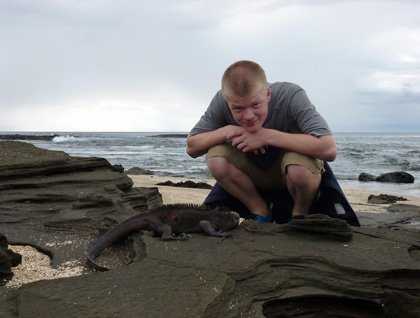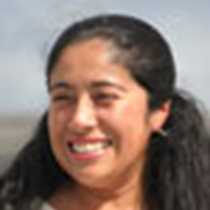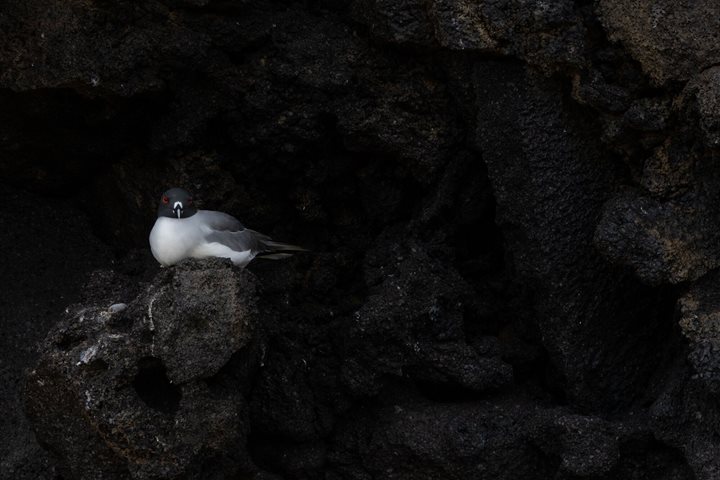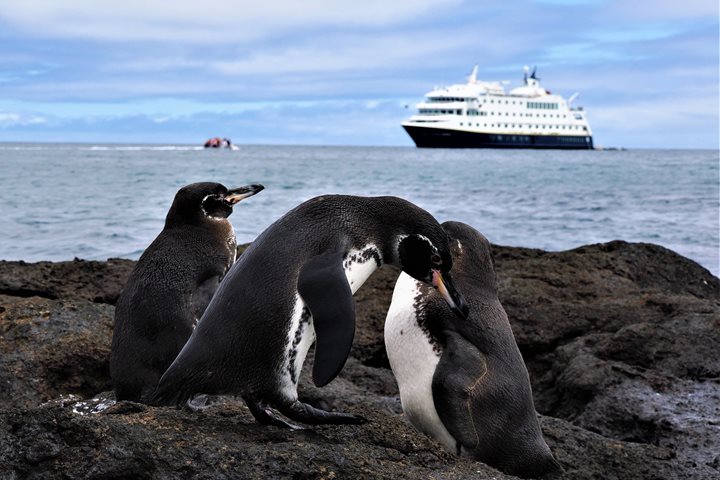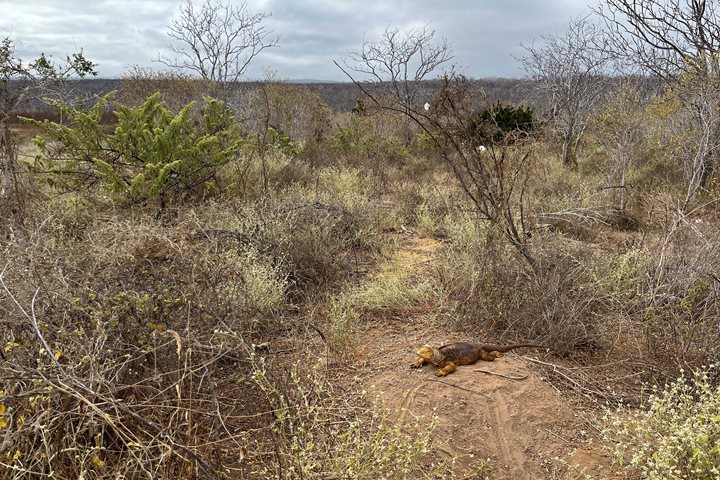We navigated all night long from the western side of Isabela Island towards the central part of the archipelago. Today we explored Santiago island, the island where Charles Darwin spent most of his time during his famous trip to the Galapagos Archipelago.
Santiago, also known as James or San Salvador, is the fourth largest island in Galapagos. It is an iconic island due to the different projects of conservation that have been taking place there, including the eradication of introduced mammals such as pigs, donkeys and goats, as well as the reintroduction of giant tortoises, the monitory of the Galapagos hawk population and its behavior, and many more initiatives!
We had an outing before breakfast, which included an optional walk at the visitor’s site known as Espumilla Beach, an isolated beach lined with mangroves. As we were approaching the landing site, we spotted several Pacific green sea turtles, clearly floating very close to the shore, and as we got closer we realized that they were all mating. Once we were on land, our hike lead us through the mangrove forest, among giant Palo Santo trees and brackish water lagoons. Here we observed a solitary flamingo and many white checked pintail ducks looking for food. Many land birds were also spotted, such as Galapagos doves, Darwin finches, Galapagos mockingbirds and the top predator of the archipelago: the Galapagos hawk. The beautiful scenery and great exercise was a great way to start the day, and all of this took place before breakfast time!
We repositioned the ship, this time towards a nearby visitor site called Buccaneer’s Cove. Many activities were included in the morning program, from snorkeling, to rides on our glass-bottomed boat, and of course, kayaking options! Conditions were excellent and snorkeling was awesome, we got to see all kinds of colorful fish, white tip reef sharks and rays.
In the afternoon, we visited Puerto Egas, where we landed on a black beach. We began our activities with a hike along the coastal area, where we explored the tide pools and observed tons of wildlife, including Sally Lightfoot crabs, marine iguanas, herons, plovers, whimbrels, American oystercatchers and Galapagos sea lions. This trail led us up to an area known as “the grottos”: these formations are collapsed lava tubes where Galapagos fur seals find shelter during the day. We came back with great pictures.
Santiago Island is a place full of wildlife and amazing landscapes. The magic of Galapagos never stops surprising us, another great day in paradise!

